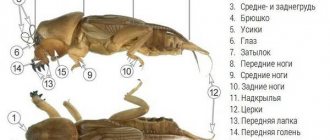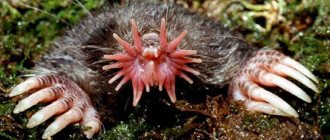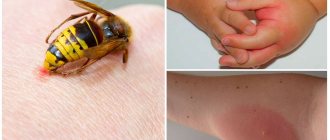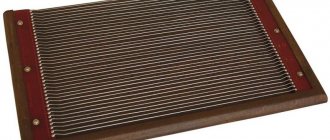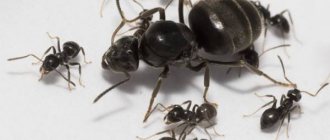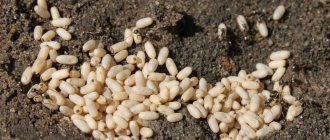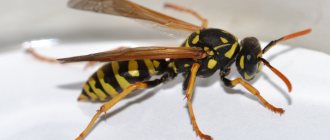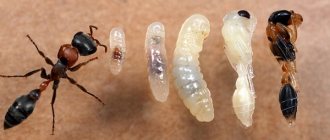No matter what your summer cottage plot is, no matter what you grow on it, and no matter what methods of soil cultivation you prefer, you will obviously not be happy if there are moles on the plot.
After all, moles are not only useful insectivores, which are an integral part of many ecosystems, but also a real death for your crop.
They create entire labyrinths of their passages underground, at the same time spoiling the roots of plants planted on your site, and ugly piles of earth thrown out by moles to the surface can ruin the aesthetics of any lawn. However, not every person who discovers that he has moles in his country house knows how to get rid of them.
Therefore, it is advisable to consider the main ways to combat these animals.
How moles reproduce
Moles give birth once a year, some species 3 times a year. Moles mate underground, after mating they lose interest in the partner, the males return to their nests, and do not care for the cubs after birth. The mating period is 2-3 days.
The female carries the fetus for 40 days, then gives birth. At one time, a female can give birth to 3 to 9 cubs. After birth, she feeds the cubs with milk. After 20-30 days, the cubs become adults, begin to make their own holes and nests, and as they grow older, young moles become pugnacious and begin to occupy new territories. The female reaches sexual maturity in 1 year; there are species in which this process occurs faster.
Altai mole reproduction breeding features
- Mating occurs from June to early August
- pregnancy lasts about 270 days, such a long period due to diapause (fertilized egg does not develop)
- young individuals are born in April-May of the following year
- litter of 3-6 cubs
- sexual maturity in the 2nd year of life, females - in the 1st year of life
Animal eye degeneration as a form of natural selection
From the point of view of evolutionary theory, the gradual simplification of the structure of the mole's eyes and the loss of many functions by them is a way of adapting to the lifestyle that this animal leads. Moreover, the regression of the animal’s vision system is associated not only with the lack of need for a clear visual picture, but also with the harmfulness of full-fledged eyes underground.
For example:
- If a mole had normal large eyes, like, say, rats or mice, then with constant digging of underground passages, earth and dust would get into them. This would lead to eye contamination, inflammation, suppuration and death of animals. The smaller the eyes, the more difficult it is to damage them, and when they are constantly closed with eyelids, they are reliably protected from external influences;
- Since the sense of smell is much more important for moles, most of the analyzers in the brain are responsibly focused specifically on processing information from olfactory receptors (in star-nosed moles, the sense of touch also plays an important role). The involvement of extensive brain structures in processing visual information would not be rational.
The photo below shows the eye of the Iberian mole:
By and large, moles at this stage of their evolution are moving towards the complete disappearance of their eyes. This form of natural selection, according to different classifications, is:
- Driving - with it, an advantage in survival is found in animals that deviate from the norm of development of a particular trait. The norm is predominantly open, not very small eyes, but in the case of moles, individuals with constantly decreasing eyes that close with eyelids more often survived. That is, natural selection moves these animals towards complete degeneration of vision.
- Cutting off, since individuals with “normal” eyes died more often due to eye lesions.
It is also useful to read: Is the mole really blind and sees nothing?
By the way, it is precisely these forms of selection that are characteristic of almost all animals with certain reduced organs. Including for people who have practically degenerated the muscles that move the ear, or, for example, the coccyx, in the place of which their ancestors had a tail.
The benefits and harms of moles
Benefits of moles:
- at one time they planned to use mole skin to make fur products
- feed on the larvae of pests: chafer beetles, click beetles, mole crickets, etc.
- save from swampiness
- improve the aeration process, loosen and mix soil layers
Harm from moles
- in one day, a mole can dig 10-50 meters of tunnels
- may disrupt drainage systems
- molehills reduce pasture productivity
- destroy the root system of plants
- spoils the appearance of the lawn covering
- feeds on earthworms 80 to 150 grams per day
- can be carriers of tularemia, encephalitis
Habitat
How long a mole lives often depends on its habitat. We do not mean specific regions here, since this mammal is distributed everywhere, with the exception of the polar regions and countries with cold or too hot climates.
An important criterion for the habitat of these animals is the looseness of the soil and the abundance of invertebrates in it, which they feed on. This is why moles prefer:
- Clearings in the forest where there are no trees with their powerful rhizomes.
- Meadows in which forbs loosen the soil with their roots and fertilize it, attracting a large number of different larvae and earthworms.
- Broad-leaved and mixed young forests in which moles find attractive edges.
- Farmland where the soil is constantly loosened and cultivated.
- Hilly and mountainous terrain up to the alpine meadow zone.
If nothing disturbs the peace of moles in these places, then they can live up to 7 years.
Features of the life of moles
Life of moles
Naturally, it is easier to defeat your enemy if you collect as much information about him as possible. Therefore, remember some important information regarding these insectivores:
- Moles do not live alone, but in families (up to five animals can operate within your area);
- Moles don't have ears
- They are active both during the day and at night (a slight decline in activity is observed only from noon to four o’clock in the evening);
- They are very strong and agile;
- Moles have very poor eyesight, but this is compensated by an excellent sense of smell and hearing;
- The animals eat a lot, and they feed mainly on large insects, invertebrates, worms and slugs.
- Molting of moles occurs from spring to autumn.
- A mole has 33–44 teeth
Idioadaptation in a mole
- It is a mistake to believe that a mole has no eyes; a mole has eye sockets, but no lens and no retina. (an example of private degeneration) a mole’s “skin” can lie in any direction, this allows it to move both forward and backward along the course without any problems.
- Digging type paws help to dig faster.
- Reduced ears do not interfere with movement in the soil
Common features in the structure of moles of different species
No matter how different these animals are in size, they have common characteristics that allow them to live underground. Among them:
- An elongated body in the shape of a rounded bar.
- The head has a cone-shaped muzzle that ends with a nose - a proboscis.
- Animal ears are vestigial pieces of skin that look more like twisted ridges protruding from the hair.
- Vibrissae (hard hairs) located on the tail, which help moles move in underground labyrinths in any direction, even backwards.
- The eyes of animals practically do not function, since when living in complete darkness they were replaced by perfectly developed hearing, touch and smell.
- Well-developed small teeth, ranging from 34 to 44 pieces, depending on the type of mole, are not adapted to bite into the ground, but are used for hunting insects and soil invertebrates.
- Animals' fur grows upward and bends perfectly in different directions, rather than covering the body in one direction, as in other mammals, which makes it easier for them to move underground and protects them from pollution.
- The paws of moles are turned palms out and serve as a kind of shovels for discarding earth when making holes.
Depending on where moles live, they differ in the color of their fur, which can range from brown and gray to deep black.
How moles winter
The mole does not hibernate in winter; it spends the winter in the same area as the summer. Sometimes the crown makes forays into the leaves under the snow cover, this allows it to feed on insects that overwinter in the thickness of the leaves. For the winter, the mole stores insects on which it feeds; in winter, it is more difficult for the mole to find food for itself. If a mouse dies in the mole's passages, the mole can feast on it. In winter, the mole sleeps longer than in summer, this allows him to save vitality.
Sense organs
The eyes are small, very poorly developed and almost completely covered with skin. The mole has no ears. The auditory openings are also covered with skin. But the animal’s hearing is remarkably developed.
Which sense organs are better developed in a mole? The frequency sound conductivity of the soil is available to it. The sense of smell is well developed. By smell, he finds food in the ground.
Tactile hairs are distributed throughout the body. Thanks to them, he senses worms located 50-70 cm away from him.
Also an integral part is a 2-centimeter tail, which is covered with hairs. When the mole raises its tail, it feels the ceiling of the dug tunnel. If he does not feel the ground, he returns to his hole.
Natural enemies and diseases of moles
The average lifespan of a mole is 4 years, but there are many factors that influence the lifespan of moles. Moles are often eaten by their natural enemies, but they also suffer from various diseases. People often consider moles to be garden pests, they begin to destroy moles on the site with traps and chemicals, this reduces the number of moles on the site
Animals
A mole can become a victim of a marten, fox, raccoon dog, or cat. The skin of a mole has a musky odor, this allows it to protect itself from foxes and raccoon dogs; predators find the smell unpleasant and avoid moles. Mostly, moles become prey outside the burrow, crawling to the surface, but there are exceptions, for example, weasels (they hunt moles in their own burrows). During the mating period, the weasel makes a characteristic sound, which the moles accurately identify and run away.
Diseases and parasites
Mole piroplasmosis
Moles become infected with worms; there are cases of moles becoming infected by eating insects, for example, piroplasmosis. Trichinella can be found in the muscles of moles, and trematodes (flatworms) in the intestines.
Insects
Bedbugs are victims of fleas and ticks; moles are parasitized by about 9 species of fleas.
Birds
Hawk
Vultures, hawks and eagles, crows, owls are not averse to “feasting” on moles, but the mole does not see and this makes it an easy prey.
Natural phenomena
- If the ground freezes deeper than half a meter, moles die in large numbers from hunger.
- Moles are afraid of drought
- Moles often drown from flooded passages
Plants that moles are afraid of
Imperial hazel grouse
Moles are afraid of the following plants
- imperial hazel grouse
- black beans
- hazel;
- elder;
- beans;
- garlic.
Nutrition
These creatures belong to the order of insectivores, therefore, their diet corresponds to this. A soil animal, the mole mainly obtains food for itself in feeding passages, that is, underground tunnels dug by it, with the help of its nose, which perfectly distinguishes odors.
It eats slugs, beetle larvae, and earthworms. But these underground inhabitants also hunt when they come to the surface. There they catch beetles, ants, frogs, and small rodents. These animals, contrary to some unreliable rumors, do not consume plant food at all. The food metabolism of moles is quite intense, and they require approximately 150 g of animal food per day.
By the end of autumn, in preparation for the cold, such animals begin to make winter supplies for themselves, immobilizing their prey through a bite. Such pantries, usually located in close proximity to the nest, contain more than 2 kg of food.
Effective ways to fight moles
If you have moles, you need to figure out how to get rid of them as soon as possible. After all, the damage caused to green spaces will increase every day, and animals will not hibernate until winter. And first of all, it is advisable to pay attention to such methods of fighting animals that will save their lives.
Basic options for getting rid of moles
- Prevention of their appearance on the site. This is an effective, but very labor-intensive way to solve the problem, in which the owner of the site must dig a fine-mesh plastic (or better, galvanized mesh) into the ground along its entire perimeter. Moreover, this mesh should lie at a depth of at least 1 - 1.2 m, and at the edges it should fit tightly to the fence. And if all these requirements are met, you don’t have to be afraid of moles. Some summer residents, in order to save money, use sheets of roofing felt or slate instead of mesh, but this option is much worse than the first, since these materials are impermeable to worms and beneficial microorganisms.
- Using traps. Today on the market you can easily buy special traps for moles, most of which are cylindrical and should be installed directly inside the passages leading to the surface. Thanks to the special design of the doors, the animal gets inside the trap and can no longer get out of it - you decide where to release it.
- Use of mole-cutters. Such devices can also be purchased ready-made or made with your own hands. Moreover, in any case, the mole striker should be installed directly above the exposed passage of the animal, and the owner of the device in question should take care of the sharpness of the striking element (after all, the mole’s skin is very hard, and the fur is smooth and slippery).
SuperCat Vole Trap
The mechanical trap SuperCat Voletrap is designed for catching moles and field mice. To install a mole trap you need to perform three simple steps:
- Find a hole;
- Remove soil;
- Set a trap.
To search and remove soil, we recommend using a branded accessory: probe + drill, not included in the kit and must be purchased additionally. You can also do this job using gardening tools. The trap should not be placed on the molehill, but in a tunnel/burrow that extends from it, approximately 10-15 cm away from the mound. Thanks to the patented EasySet technology, you can set the trap in less than one second. To do this, place the mole trap vertically, the handle on top. Next, pull the handle up, the guard will fall into place, and the impact handle will lock in the upper position. Read the instructions before use. The SuperCat Vole Trap is a rodent control product and is intended solely for this purpose. It has sharp plastic elements that can cause harm to health if used incorrectly.
Folk methods of combating these insectivorous animals
All folk methods of fighting moles in a summer cottage are aimed at frightening animals with loud sounds (for this, sticks with iron cans hung on them are stuck into the ground or champagne bottles are dug in at an angle) or unpleasant odors (rotten fish and eggs are placed inside the passages). or a rag soaked in kerosene).
Moreover, although they are simple and accessible, they are much less effective than the methods listed above. This is why it is almost impossible to get rid of moles using folk remedies - even if the animals leave the site, they will return back very soon.
Differences from other mammals
Some people are sure that moles and rodents are the same thing. However, this judgment is far from the truth. Moles have many differences from other rodents:
- Moles are not endowed with such powerful jaws as are characteristic of rodents, so they live where the soil is very loose. It's easy to make long passes with your paws.
- Rare rodents can swim, and the mole is an excellent swimmer. It will not be difficult for him to swim across a medium-width river.
- These shrews are completely unsuited for life on earth. When they accidentally land on the surface, their behavior seems clumsy, since they have almost no vision and are unable to adequately perceive the environment. On the ground they can only move by crawling.
- Moles are endowed with weak vision, designed to be able to distinguish light from dark. Therefore, with such characteristics, a mole ideally lives only underground.
The following characteristic features distinguish moles from small rodents:
- shortened black fur that is shiny;
- an elongated proboscis in the head, with nostrils at the bottom;
- rather large and widely spaced forelimbs of a spatulate type, the back of which faces upward;
- the hind legs are not large, they are poorly developed;
- small, visually impaired eyes;
- the length of the mole varies from 11 to 21 cm, and the body weight can be about 60-150 grams;
- shortened tail.
Living environment and lifestyle
Well, we won’t be original here. Everyone has seen mole holes on the ground, and therefore it is easy to conclude that the mole’s habitat is soil. If we see such small mounds of earth in a meadow, there is no doubt that the burrower lives in the depths of the lawn.
Animals prefer to live in moist, loose soil. Such soil is easier to dig, and, of course, this digger always tries to find such an underground environment convenient for living.
However, in the absence of this, the animal does not lose heart, and is quite capable of living in a denser soil environment, it’s just that in this case the length of the tunnels it digs is not so great.
If the soil is what it needs, a blind mole is able to dig through fairly long underground passages, dotting the surface of the earth with molehills, that is, holes for oxygen to enter the burrow system, as well as for throwing away excess building material (soil).
Mole burrows can extend for hundreds of meters, and such underground passages dug by moles are complex labyrinths looped into a single system.
